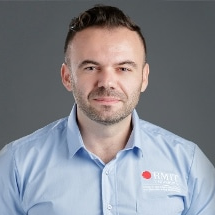Polymer Materials and Design Processes for Additively Manufactured Products
A special issue of Polymers (ISSN 2073-4360). This special issue belongs to the section "Polymer Processing and Engineering".
Deadline for manuscript submissions: 15 October 2024 | Viewed by 3690
Special Issue Editors
Interests: hybrid materials; lightweight load-bearing structures, design for additive manufacturing; optimisation; simulation
Interests: interaction of high power laser radiation with matter leading to changes in state from heating to melting and applications in additive manufacture; joining and surfacing
Special Issue Information
Dear Colleagues,
One of the great promises of additive manufacturing was innovations in product design by exploiting its geometry agnosticism and the reduction of constraints previously imposed by manufacturing capabilities. Once employed purely for prototyping, additive manufacturing is now increasingly used in the production of end-use products, either for spare parts, small series production, or tooling. However, there are still challenges to the wider industrialisation of additive manufacturing, such as a lack of a broader selection of printable materials, limited material performance but also a lack of design knowledge, in particular, the familiarity with the technology and the design principles that are best suited to AM’s unique capabilities. Manufacturing scaling also appears to be one of the major challenges. While progress has been made to address this challenge, there are still unknowns and a lack of understanding about the process and material interactions during them that would lead to better part repeatability and process accuracy.
Since manufacturing innovation starts with design innovation, this Special Issue focuses on advances, both in polymer material/process design and product design, that impact and improve additively manufactured end-use products and the industrialisation of additive manufacturing.
Dr. Mladenko Kajtaz
Prof. Dr. Milan Brandt
Guest Editors
Manuscript Submission Information
Manuscripts should be submitted online at www.mdpi.com by registering and logging in to this website. Once you are registered, click here to go to the submission form. Manuscripts can be submitted until the deadline. All submissions that pass pre-check are peer-reviewed. Accepted papers will be published continuously in the journal (as soon as accepted) and will be listed together on the special issue website. Research articles, review articles as well as short communications are invited. For planned papers, a title and short abstract (about 100 words) can be sent to the Editorial Office for announcement on this website.
Submitted manuscripts should not have been published previously, nor be under consideration for publication elsewhere (except conference proceedings papers). All manuscripts are thoroughly refereed through a single-blind peer-review process. A guide for authors and other relevant information for submission of manuscripts is available on the Instructions for Authors page. Polymers is an international peer-reviewed open access semimonthly journal published by MDPI.
Please visit the Instructions for Authors page before submitting a manuscript. The Article Processing Charge (APC) for publication in this open access journal is 2700 CHF (Swiss Francs). Submitted papers should be well formatted and use good English. Authors may use MDPI's English editing service prior to publication or during author revisions.
Keywords
- additive manufacturing polymers
- materials
- design
- end-use products
- industrialisation
- polymer composites







